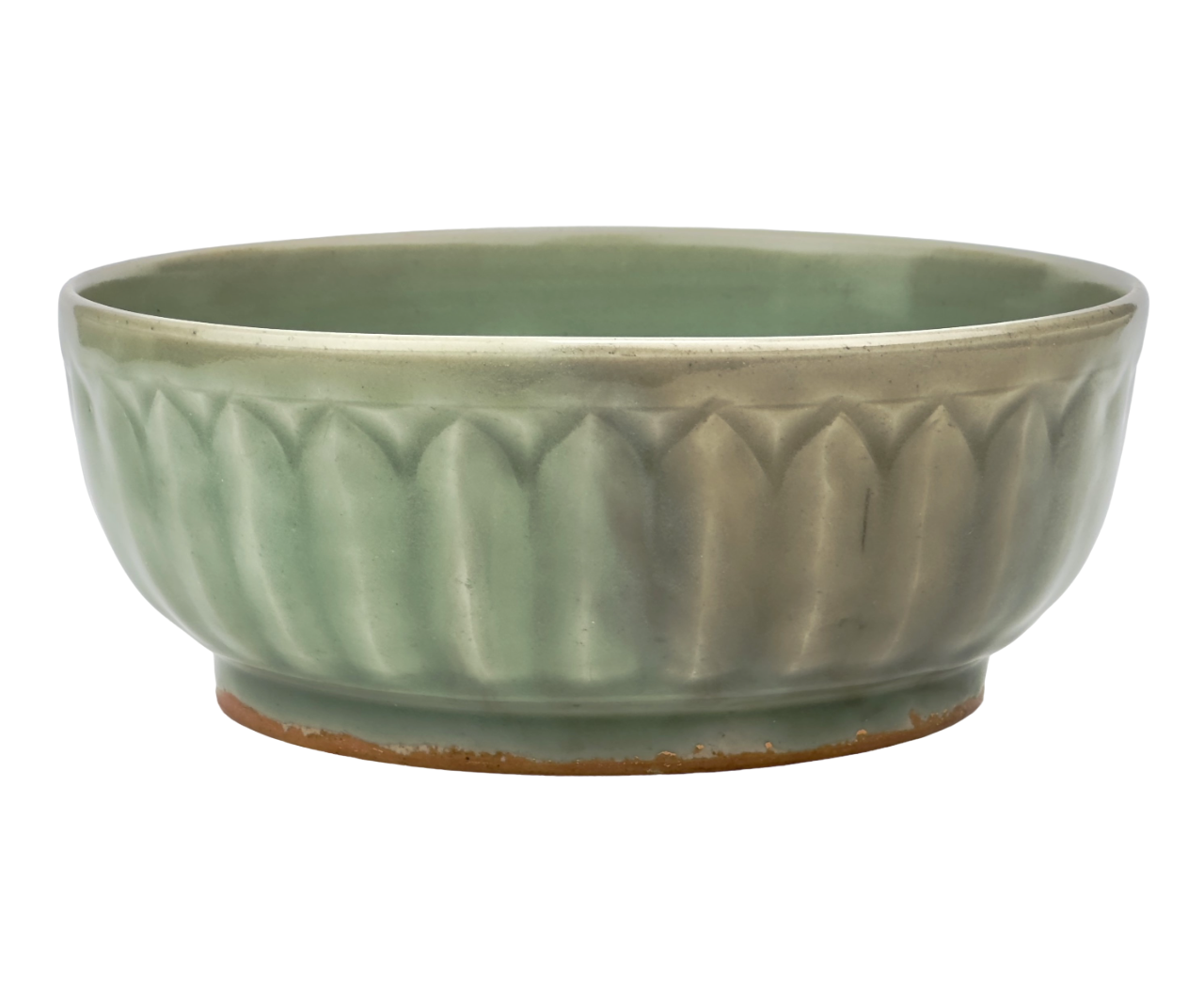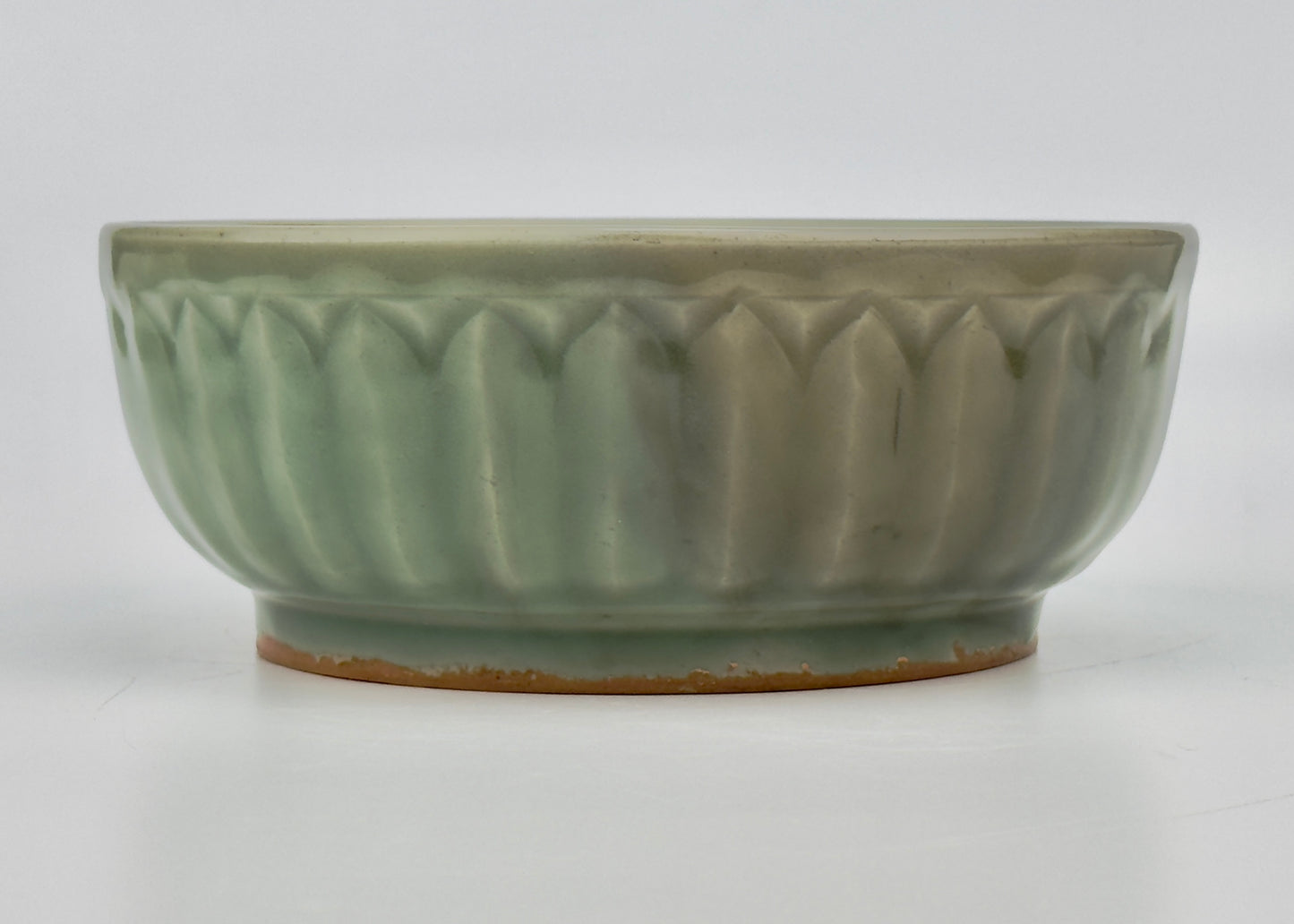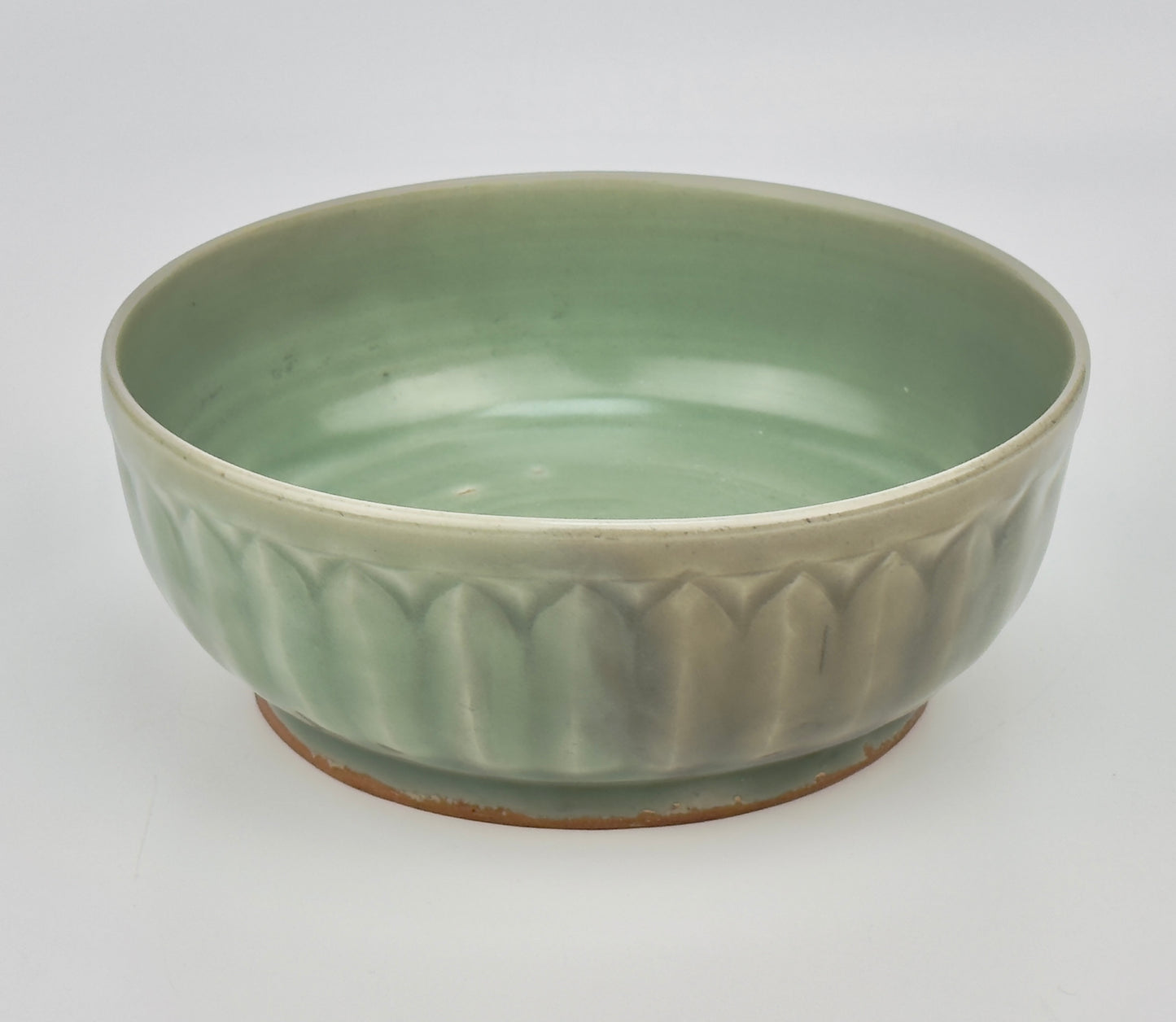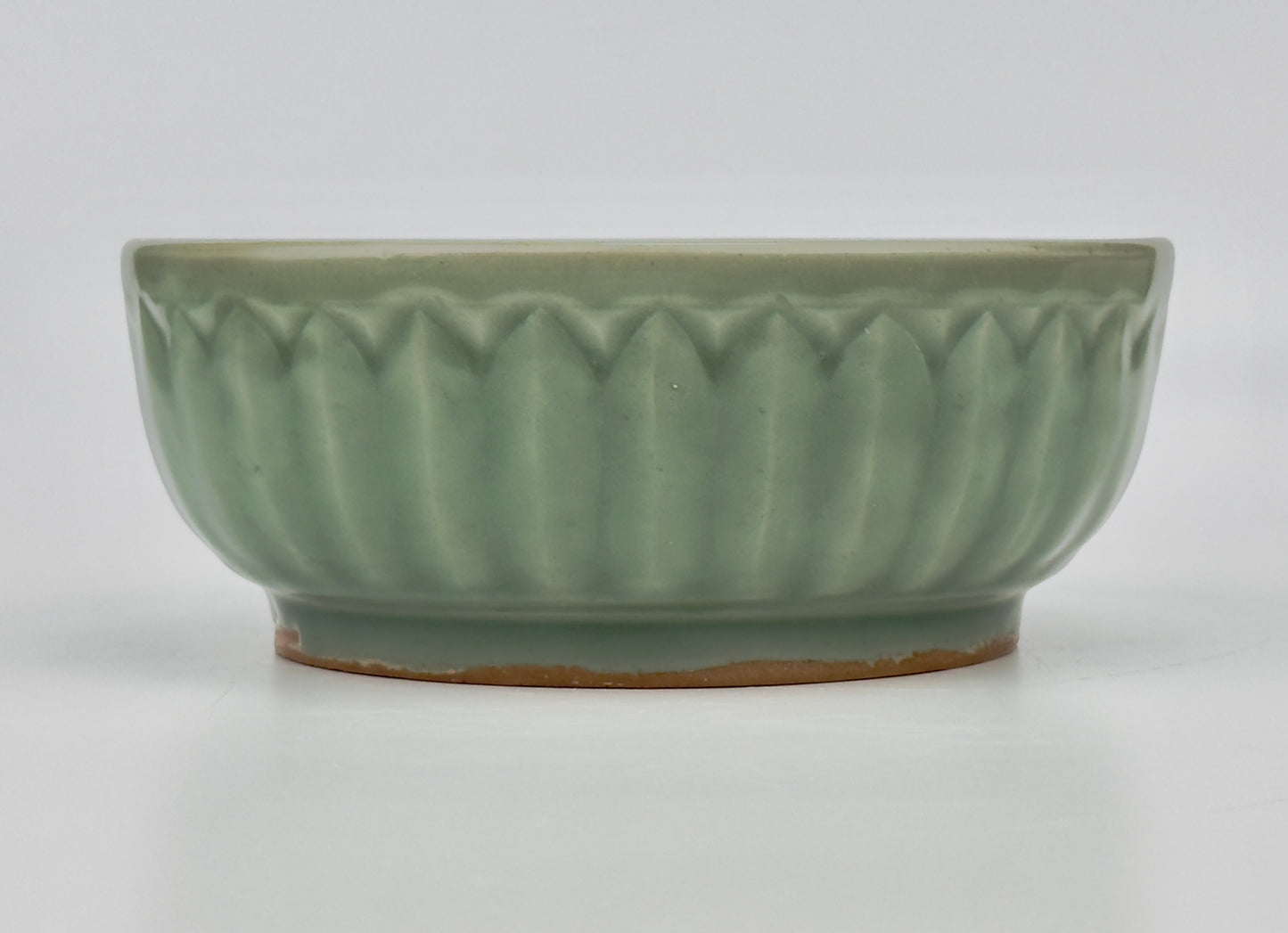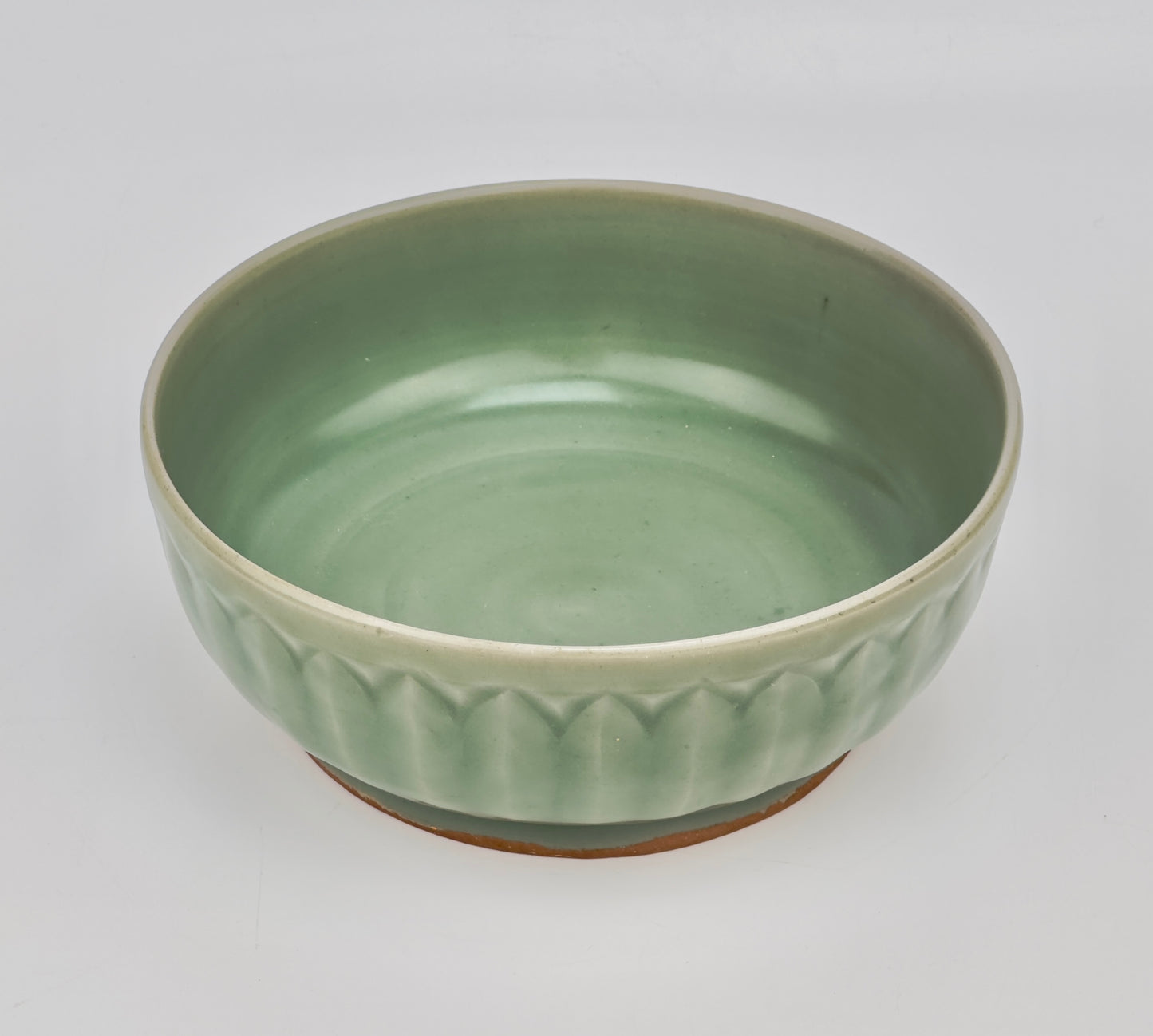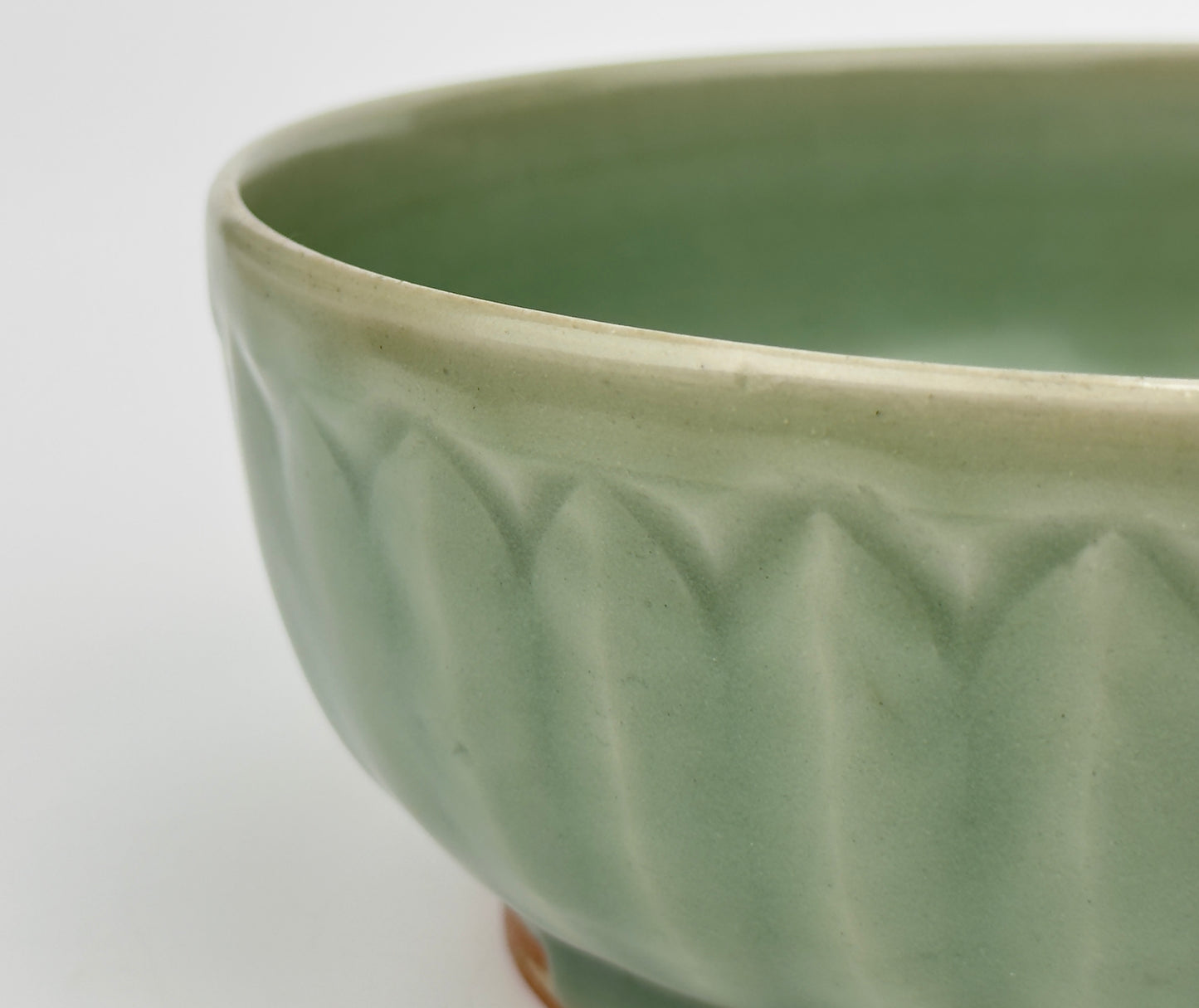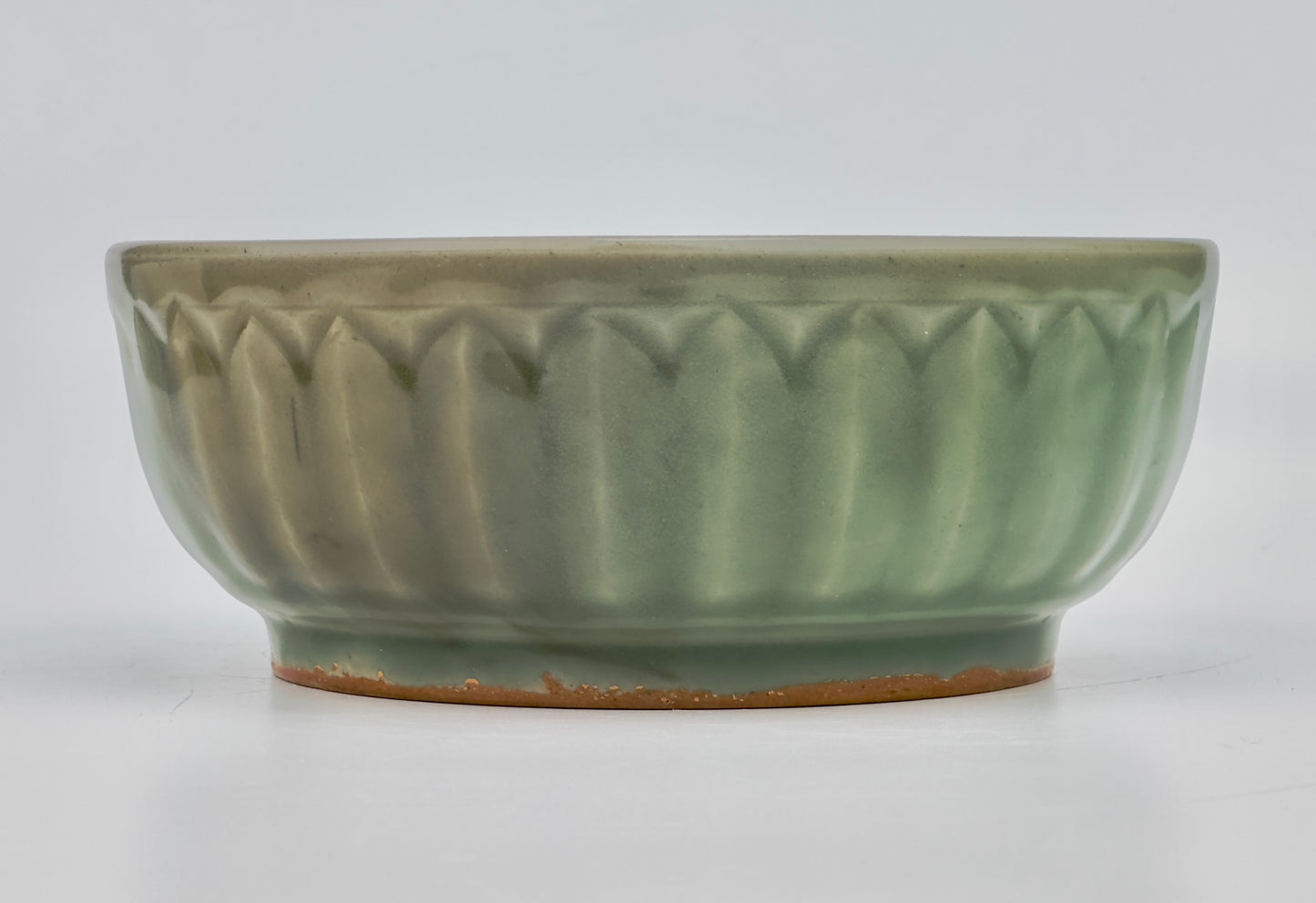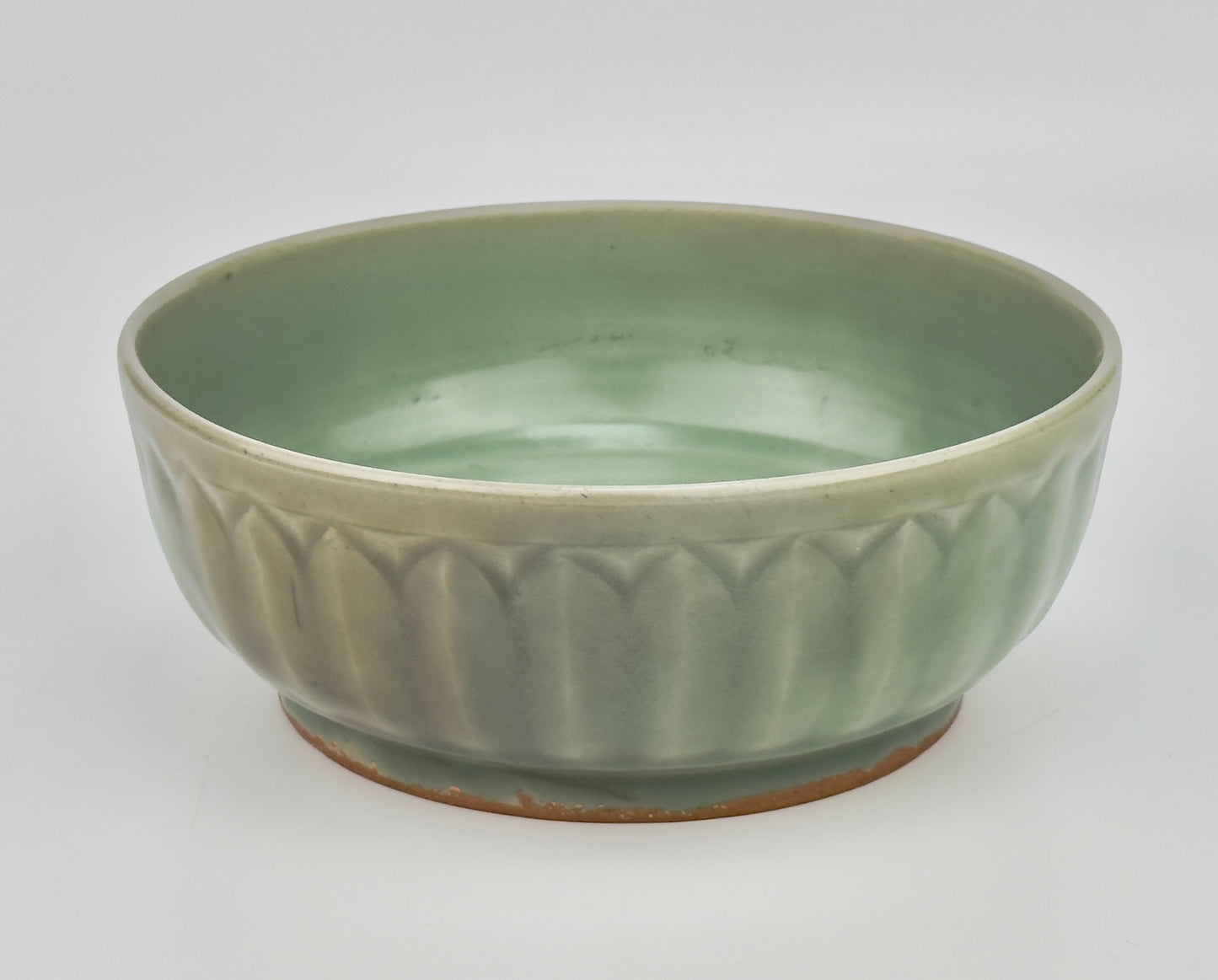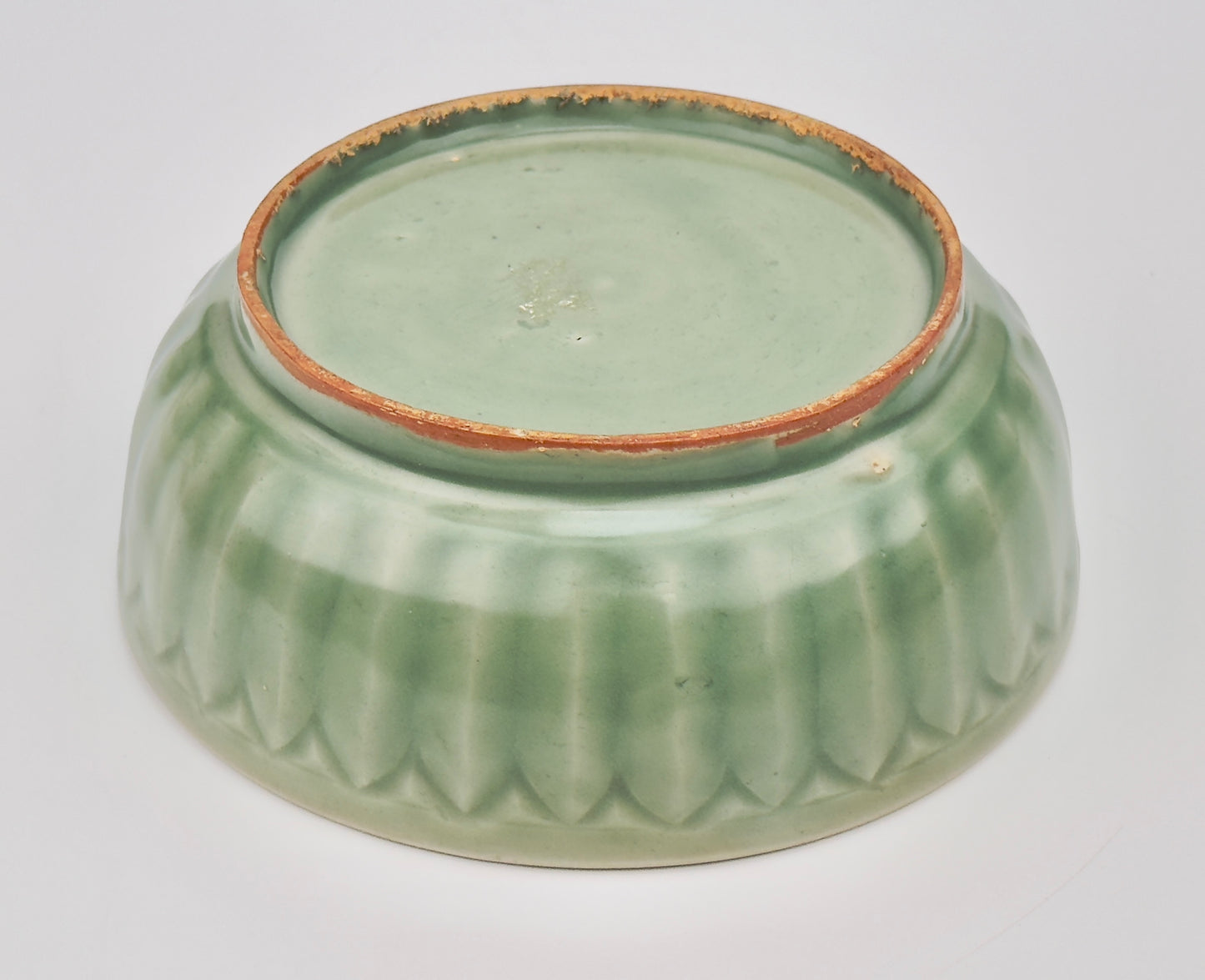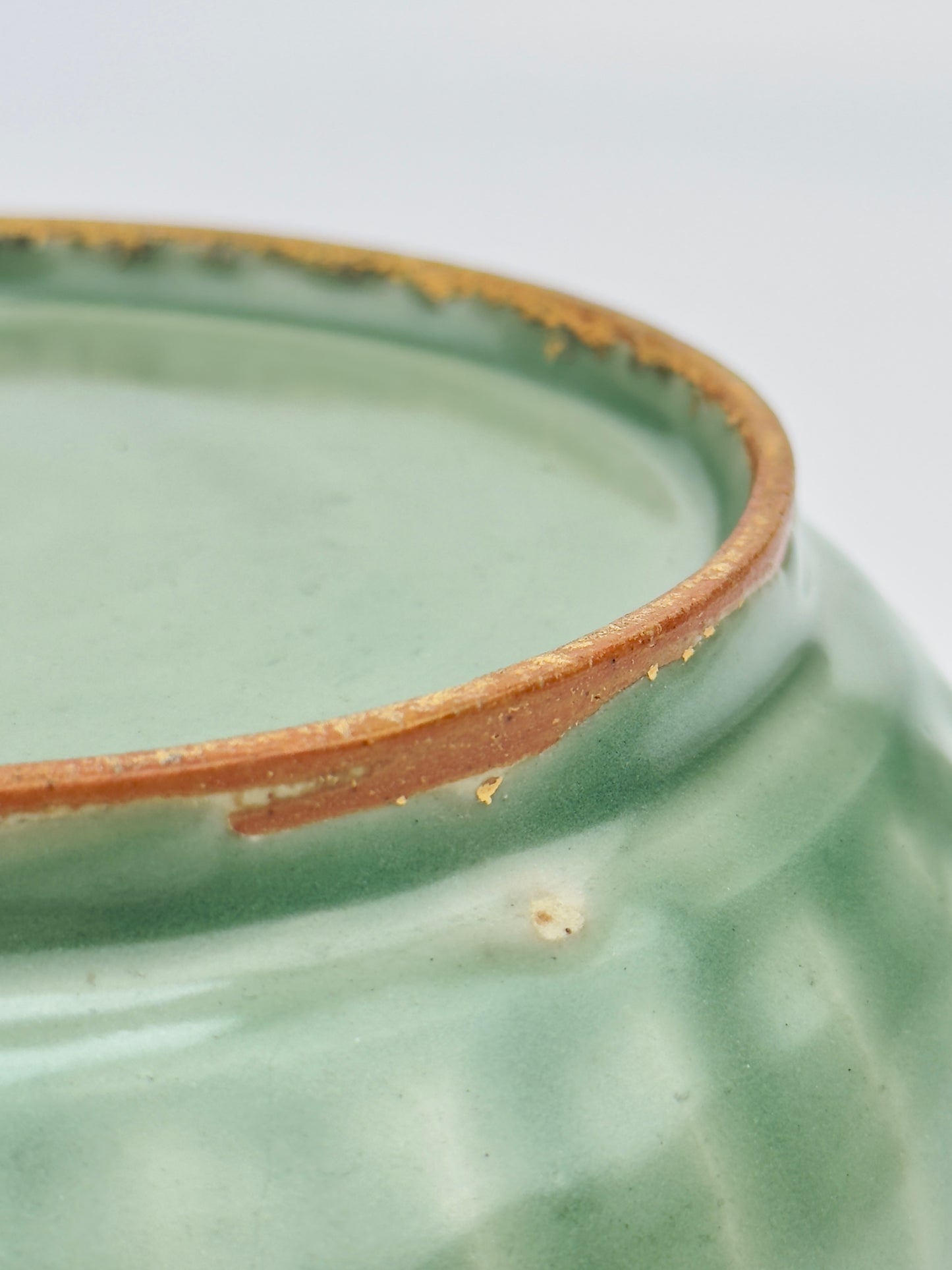Lotus Petal 'Longquan' Celadon Bowl, Ming dynasty
Lotus Petal 'Longquan' Celadon Bowl, Ming dynasty
Couldn't load pickup availability
The bowl features a relatively deep green glaze and a smooth and lustrous finish. The exterior is intricately incised with a lotus petal design, symbolizing purity and spiritual enlightenment, while the interior remains plain to emphasize the glaze's elegance. Over centuries, a natural brown discoloration has appeared on the exterior, reflecting its historical authenticity and prolonged chemical reaction during burial. This is also considered a part of the aesthetic element of celadon.
Period: Ming Dynasty (1368~1644)
Region: Longquan, China
Medium: Stoneware - Celadon glazed
Type: Tripod censer
Size : 18.5 cm(Diameter) , 7.5cm(Height)
Provenance : Acquired in late 1990s from Hongkong
Reference :
* Ming Dynasty Longquan Celadon
Longquan celadon from the Ming Dynasty typically exhibits a more robust and heavier stoneware body compared to its Song Dynasty predecessors. The Ming era saw an evolution in celadon glaze, achieving a wider spectrum of green hues, from olive to bluish-greens. Ming celadons often had thicker glaze applications, sometimes featuring multiple layers and even multiple firings to attain depth and richness in the glaze.
In contrast, Song Dynasty Longquan celadons are known for their more refined and thinner bodies, with a glaze palette that tends toward more subtle and more uniform green shades. The shapes of Song celadons were usually simpler, emphasizing the glaze's quality and texture.
During the Song period, there was also a greater emphasis on subtle and elegant forms, with less ornate decoration compared to the Ming pieces, which showcased more elaborate decorative motifs, including incised or moulded patterns. Song Dynasty Longquan wares were also highly prized for their thin walls and lightness, reflecting a high level of technical mastery in pottery-making.
Overall, while both dynasties produced celadons of exceptional quality, the Ming Longquan celadons are distinguished by their bolder forms and more varied glaze effects, while the Song Dynasty celadons are celebrated for their simplicity and the pure beauty of their glazes.
